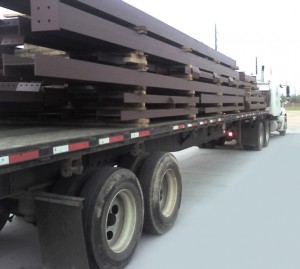Auto sector remains the major beneficiary
The history of steel-making in India can be traced back to 400 BC when the Greek emperors used to recruit Indian archers for their army who used arrows tipped with steel. History is replete with evidence of advanced knowledge of iron and steel making in India long before the advent of Christ.
Archaeological finds in Mesopotamia and Egypt testify to the fact that the use of iron and steel was known to mankind for more than 6,000 years and that some of the best products were made in India.
Among the widely-known relics is the Iron Pillar near Qutab Minor in Delhi. This pillar, built between 350 and 380 AD, has not rusted so far, an engineering marvel that baffles the scientists even today. Yet another engineering feat is the famous Sun Temple at Konark in Orissa, built around 1200 AD, where steel structurals were used for the first time in the world.
The origin of the modern iron and steel industry in India dates back to the pre-Independence era when Tata Iron & Steel Co. Ltd. (TISCO), now Tata Steel, was set up in 1907 at Jamshedpur. At the time of Independence in 1947, the country had three integrated steel plants and a few electric arc furnace (EAF)-based plants. Subsequently, several large integrated steel plants in the public and private sector were set up.
One of the remarkable features of the Indian steel industry is the production of a substantial quantity of steel through the Induction Furnace (IF) route. Typically many small-scale manufacturers have adopted this route for the low level of investment involved.
The Indian iron and steel industry, with its strong forward and backward linkages, contributes significantly to overall growth and development of the economy. As per estimates, the industry today directly contributes two per cent of India’s gross domestic product (GDP), and its weightage in the official Index of Industrial Production (IIP) is 6.2 per cent.
The steel industry has also grown at a handsome pace from a crude steel production of less than 22 million tonnes (MT) in 2000 to about 72 MT in 2011-12 with a CAGR of 11.4 per cent. The per capita consumption has increased from 29 kg in 2000 to 59 kg in 2011-12. Almost 70 per cent of the population of India lives in rural areas where per capita consumption is as low as 10 kg.

There is a significant growth potential as in the consumption of steel with investments in infrastructure, rapid urbanisation and growth in manufacturing in India. India is expected to eventually catch up with the global average of 200 kg.
The Government plans to increase infrastructure spending from the current five per cent of the GDP to 10 per cent by 2017. Given India’s double-digit energy deficit, one-third of the allocated amount or infrastructure spending is directed towards the power sector.
Besides power, the Government has proposed investment of $1 trillion in infrastructures (roads, bridges, ports, airports, railways, etc.) during the XIIth Five-Year Plan ending 2017.
Taking 15 per cent as steel components in total investment, it can generate additional demand worth $75 billion of steel in the next five years or $15 billion worth of additional demand per year or in terms of quantity, additional demand of around 19 million tonnes per annum.
Investment in infrastructure would have its cascading effect on demand of steel from construction, automotive, engineering and capital goods industries. Besides, the Indian power sector may expect orders for over 100 giga watts over the next few years. In addition to power plant construction, steel will also be extensively used in making pipelines and power equipment.
With schemes like the National Rural Employment Generation Act (NREGA), investment in rural areas and, in turn, purchasing power of rural India is increasing.
Improvement in rural incomes will also increase steel consumption in some form or the other. This will be further facilitated when all villages of India get electricity, have water supply and are connected by road.
The Government, through various schemes, is trying to achieve this target within the next three-five years. This will provide a real opportunity for rural India for growth and, in turn, enhance steel consumption in the country.
The Working Group on Steel Industry for the 12th Five-Year Plan envisages capacity to reach a level of 149 million tonnes per annum by the end of the Plan. This implies that the country would be nearly doubling its steelmaking capacity in the next five years. This translates into addition of over 15 million tonnes per annum of steelmaking capacity every year.
– PTI Economic Service
